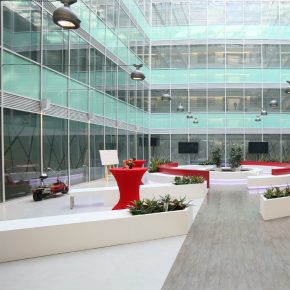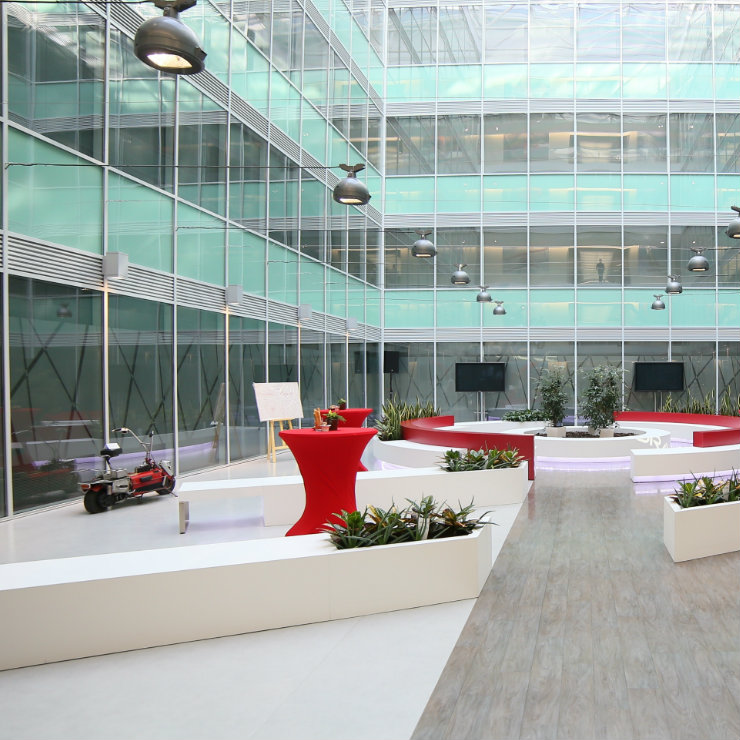
Floreasca Park, Bucharest, Romania (Oracle EMEA PR, CC BY)
Also the latest CEE Investment Report 2016 “Mission to Outperform”, conducted by Skanska, JLL and Dentons in partnership with the Association of Business Service Leaders (ABSL), shows that the upward economic trend in Romania has resulted in attractive investment yields in the commercial real estate, especially in the office sector
Romania posted an estimated EUR340m worth of investments in H1’2016, 80 per cent more compared to the same period of 2015, when the Romanian real estate market reported investments worth EUR187m.
“Several sizeable on-going transactions entail that 2016 has the potential to exceed 2015 volumes while the pipeline of anticipated disposal processes indicates a continued rise in investment volumes over the coming 18 months,” said Robert Paulson, Head of Investment Properties, CBRE Romania.
CBRE report on investment market also highlights that retail and office assets properties were the most transacted, meaning 88 per cent of the total amount, while foreign investors continue to dominate the local market (NEPI, GTC), with local capital accounting for less than 1 per cent of the total investment volume.
The report says top five investment transactions recorded during H1’2016 account for over 80 per cent of the total investment volume, the assets being located both in Bucharest and the provinces, one of the largest single asset transactions in the last years outside Bucharest being recorded in June – Shopping City Sibiu – worth EUR100m.
Adrian Karczewicz, Head of Divestments CEE within Skanska Commercial Development Europe, said that “Romania and Hungary offer extremely attractive yields in the office segment.”
The largest office transaction registered in 2015 was the acquisition of Floreasca Park by GLL from Portland Trust. The most active buyers in 2015 were GLL and Globalworth, the two investors accounting for 73 per cent of the transaction volume. More core investors looking to secure properties with stable, long-term income in a steadily growing economy are coming in as they see the opportunity to improve their returns. Prime office yields are at 7.50 per cent. Yields have compressed by 25 bps since the start of 2015 and are expected to compress further in 2016, albeit at a slower pace.
Romania is growing fast
The macroeconomic figures in Romania quoted in the report show that GDP growth in Romania has been driven by the gradual recovery of domestic demand and strong exports. With 3.8 per cent, the country had one of the highest growth rates in the European Union in 2015, behind Sweden, the Czech Republic and Slovakia.
In 2016, continuous acceleration of GDP to 4.2 per cent is expected and the World Bank foresees the economy growing by 4 per cent in 2018. Nevertheless, Romania’s national bank warns that this growth could be compromised in the future by possible increases in the budget deficit. The country is a recipient of EU-IMF financial assistance programs.
Domestic consumption and FDI have helped drive economic growth. According to the Romanian National Institute of Statistics, net investment in Romania’s economy grew by 8.4 per cent in 2015.
Romania’s overall tax burden is comparatively low. The cost-effective but talented labor force is a factor attracting outsourcing centers. The business services sector is helping drive the country’s economy. According to ABSL & McKinsey data, the sector employed nearly 51,000 people in 2015.
A further driver of the Romanian economy is, as in other CEE countries, the automotive industry, being one of its largest export sectors. The construction sector also contributed to the higher economic growth in 2015 as a positive response to the demand for infrastructure.
The new Fiscal Code and Fiscal Procedure Code, which came into force on January 1st, 2016, introduced several incentives for companies and individual investors, combined with a reduction of the standard VAT rate. It should help further accelerate growth and increase investment. Nearly 70 per cent of Romanian CFOs said that the tax changes should positively affect their business.
According to Oxford Economics, Romania is forecast to be the fastest growing economy in CEE in 2016. Consequently, occupier market activity is accelerating, with take-up totaling almost 100,000 square meters (sqm) in Bucharest in Q1’2016, the strongest first quarter ever registered. Romania’s economy has also drawn the attention of property investors. The office investment volume in 2015 in Romania was estimated at EUR242m, representing 36 per cent of the of the overall commercial property investment volume. In Q1’2016, the office investment volume stood at EUR95m.


